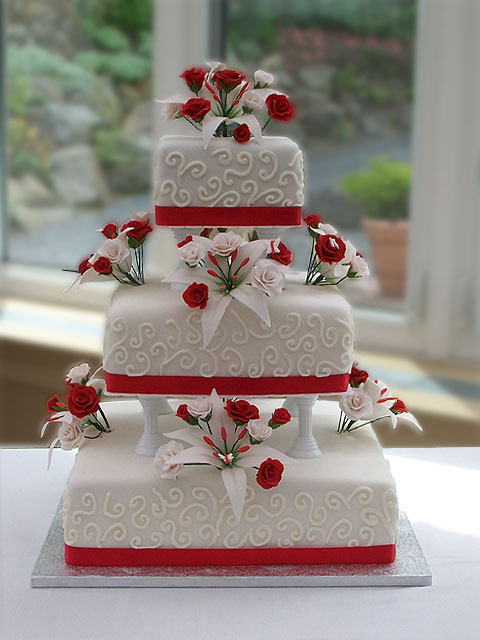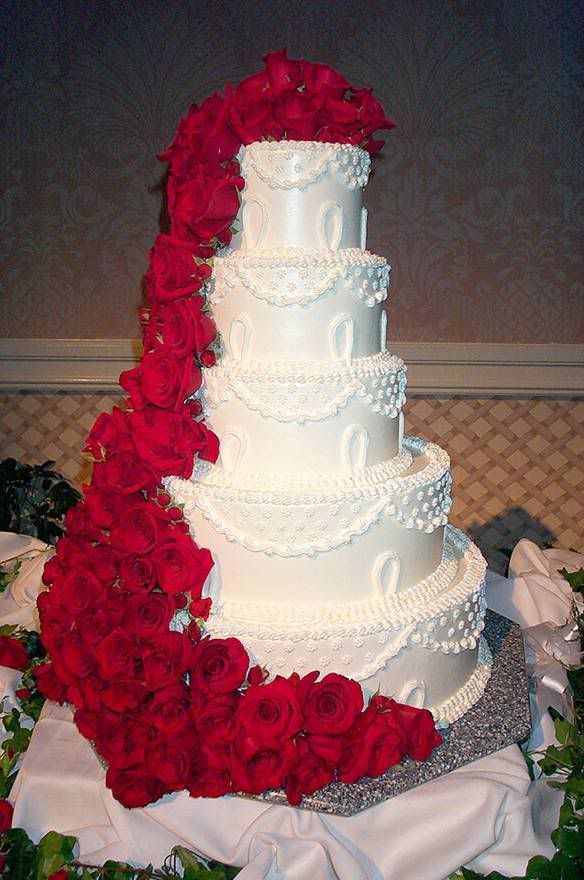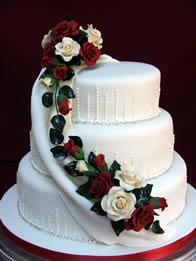White And Red Wedding Cakes





















Varieties Of Cakes
Cakes are broadly divided into several categories, based primarily on ingredients and cooking techniques.
* Yeast cakes are the oldest, and are very similar to yeast breads. Such cakes are often very traditional in form, and include such pastries as babka and stollen.
* Cheesecakes, despite their name, aren't really cakes at all. Cheesecakes are in fact custard pies, with a filling made mostly of some form of cheese (often cream cheese, mascarpone, ricotta or the like), and have very little to no flour added, although a flour-based crust may be used. Cheesecakes are also very old, with evidence of honey-sweetened cakes dating back to ancient Greece.
* Sponge cakes are thought to be the first of the non-yeast-based cakes and rely primarily on trapped air in a protein matrix (generally of beaten eggs) to provide leavening, sometimes with a bit of baking powder or other chemical leaven added as insurance. Such cakes include the Italian/Jewish pan di Spagna and the French Génoise. Highly decorated sponge cakes with lavish toppings are sometimes called gateau, after the French word for cake.
* Butter cakes, including the pound cake and devil's food cake, rely on the combination of butter, eggs, and sometimes baking powder to provide both lift and a moist texture.
Beyond these classifications, cakes can be classified based on their appropriate accompaniment (such as coffee cake) and contents (e.g. fruitcake or flourless chocolate cake).
Some varieties of cake are widely available in the form of cake mixes, wherein some of the ingredients (usually flour, sugar, flavoring, baking powder, and sometimes some form of fat) are premixed, and the cook needs add only a few extra ingredients, usually eggs, water, and sometimes vegetable oil or butter. While the diversity of represented styles is limited, cake mixes do provide an easy and readily available homemade option for cooks who are not accomplished bakers.
But today, someone who don't know the real name of the cake -that they meet- will mention it spontaneously with variety names like:
white wedding cakes
black and white wedding cakes
black and white and red wedding cakes
black and white and green wedding cakes
black and white and pink wedding cakes
square white wedding cakes
white and green wedding cakes
white and red wedding cakes
cupcake wedding cakes
white cupcake wedding cakes
fall cupcake wedding cakes
winter cupcake wedding cakes
green cupcake wedding cakes
red wedding cakes
red and black wedding cakes
red black and white wedding cakes
red and black square wedding cakes
red and gold wedding cakes
red and white wedding cakes
red and orange wedding cakes
funny wedding cakes
funny wedding cake toppers
wedding cakes pictures
wedding cake toppers
funny wedding cake toppers
monogram wedding cake toppers
wedding cake toppers humorous
redneck wedding cake toppers
wedding cake with flower
wedding cake with fountains
wedding cake with roses
wedding cake with ribbon
wedding cake with lalalilies
wedding cake black and white
square wedding cakes with flowers
square wedding cakes with ribbon
square wedding cakes with flowers. And many more ....
No comments:
Post a Comment